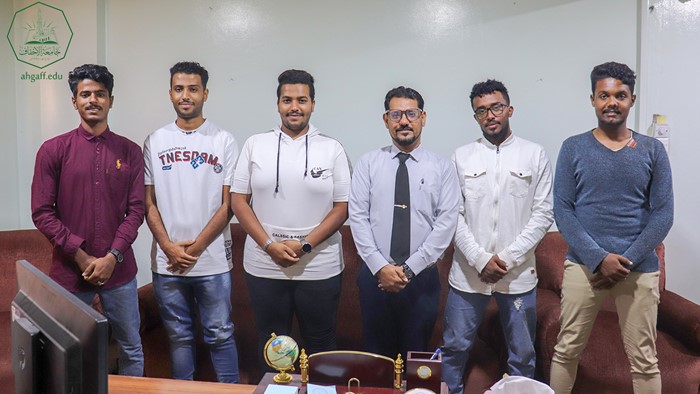Distinguished scientific research by a group of students from the Faculty of Computer Engineering and Science published in an international scientific book

Mukalla - February 25 - University Media
A research team consisting of a group of students from the Faculty of Computer Engineering and Science at Al-Ahgaff University published scientific research in a book bearing an international standard number (ISBN). The research was published as a chapter in a book. The book is called a compilation of creative ideas. The book includes 52 chapters selected from a group of research submitted to participate in the International Competition for Creative Innovation Ideas (ICIIC2024). The team consisted of five students, namely: Abdullah Bazar, Ahmed Basalem, Hussein Belfaqih, Moatasem bin Omar Ba Omar, and Naif Al-Sibai, who are students studying in the fourth level in the faculty’s Information Technology Department.
The goal of the published research, which was titled "A System for Learning Arabic to Speakers of Other Languages: A Model of Requirements," was to provide a model of requirements for creating an Arabic language learning system for non-native speakers. In terms of application, a random sample of international students at Al-Ahgaff University was chosen for the research. In order to determine their demands and the main challenges they encounter during the learning process; a group of international students were interviewed as part of the research project. This allowed for an analytical analysis of the issues these students confront when learning Arabic. The team also interviewed a group of academic Arabic language experts specialized in the field to determine the skills needed to learn the Arabic language and to confirm the needs presented in order to include them within the proposed research model.
Regarding the research methodology, Dr. Hamza Al-Aidaroos, the group supervisor, confirmed that the researchers used the Agile Kanban Method, the modern method for managing and developing projects and systems, which has been recently used in many software companies. He added that the methodology consisted of five steps, namely: theoretical study, defining and analyzing requirements, building a requirements model, developing a prototype, and evaluating the model. Dr. Al-Aidaroos stated that programming languages and techniques, such as filters and Django, were used to develop a prototype in order to prove the proposed model.
In this context, team leader student Abdullah Bazar stressed that accepting their research and choosing it for publication was not an easy task, but rather came after overcoming many obstacles. He said that their participation in the international competition and earning a silver medal is a great achievement and a motivation to exert their best efforts to continue creativity and excellence in the future, and that this achievement came after challenging conditions during the application and participation time. Student Bazar continued, saying that this accomplishment would not be the team's end but rather the start of further scientific research, honorable conference participation, and other endeavors that will further scientific study and enhance the university's and faculty's reputation.



